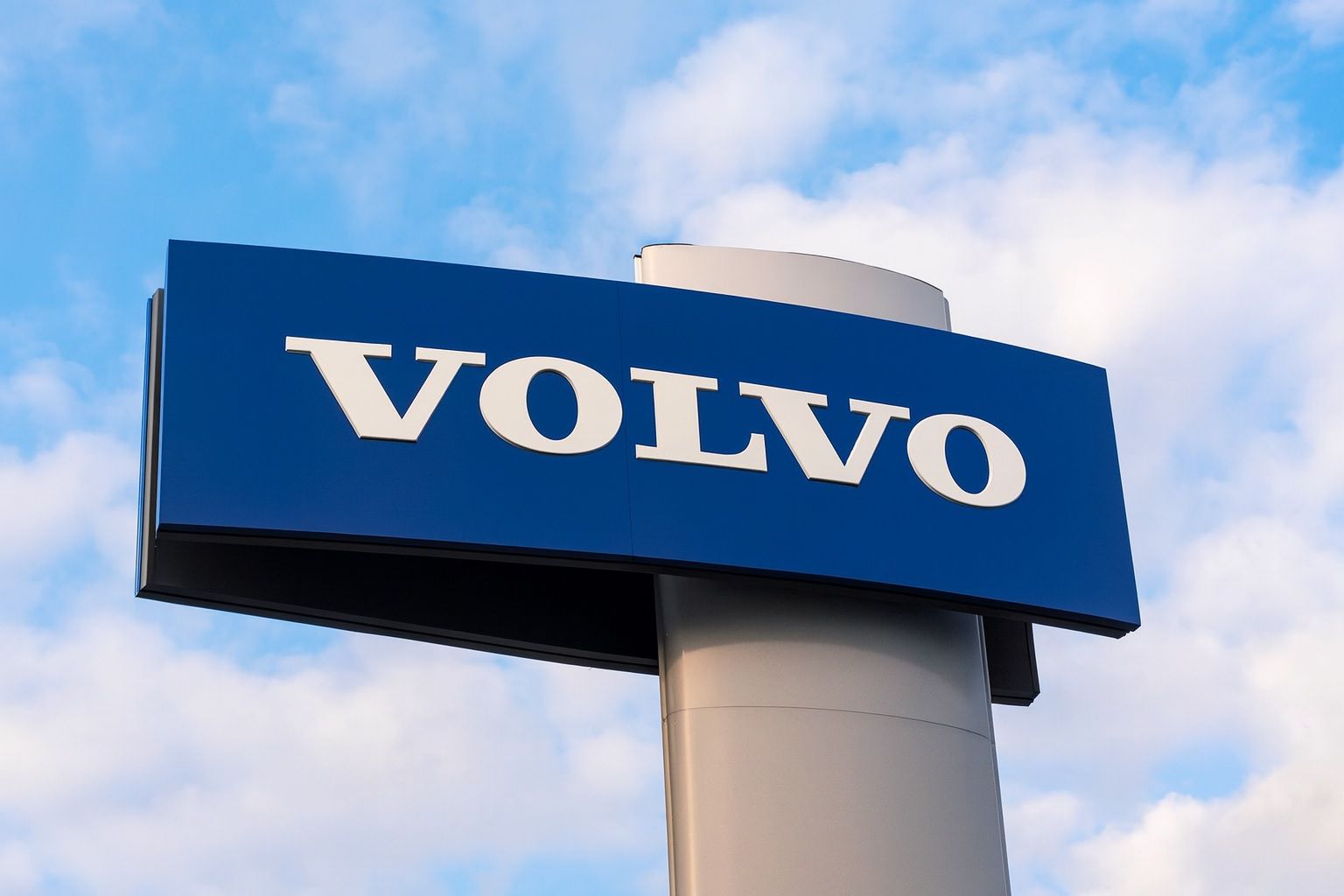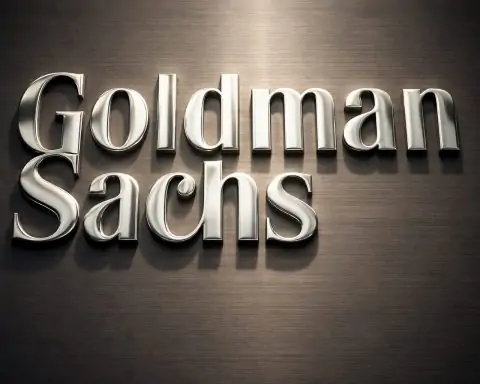- Surprise profit surge: Volvo Cars smashed Q3 earnings forecasts with an operating profit around SEK 5.9 billion, vastly exceeding analysts’ consensus (~SEK 1.6 billion) [1]. The carmaker’s gross margin leapt to 24.4% (from 17.7% in Q2) amid aggressive cost cuts and efficiencies [2].
- Stock soars: The earnings beat sent Volvo’s share price rocketing over 40% intraday, putting it on track for its best one-day gain since the company’s 2021 IPO [3] [4]. By mid-session Thursday, shares were up ~32% and trading at levels last seen in mid-2024 [5].
- Cost cuts pay off: Returning CEO Håkan Samuelsson slashed 3,000 jobs, halted new investments, and even pulled guidance to rein in costs [6]. “What we’re now seeing is really… this is delivering faster than we thought and faster than we planned,” Samuelsson said of the rapid payoff from the cuts [7]. The CEO (who rejoined in early 2025) refocused Volvo “from growth and market share to cash flow and profitability,” notes Handelsbanken analyst Hampus Engellau [8].
- Analysts impressed: “This result is very much internally generated… [management] haven’t had much help from the market,” Engellau added, highlighting Volvo’s self-driven turnaround [9]. UBS analysts similarly called Q3 “better than expected,” attributing the blowout earnings partly to currency gains and a one-time license sale – factors that could flip Volvo’s full-year outlook from a SEK 1.5 billion loss to a slight operating profit [10].
- Tariff relief eases fears: Volvo had been hit by U.S. import tariffs (most of its American-bound cars are made in Europe) and just last week its stock tumbled ~7% on tariff jitters [11]. Now a new EU–U.S. trade deal slashing auto tariffs from 27.5% to 15% is “lowering the tariff roller coaster” impact on Volvo’s profits [12]. CFO Fredrik Hansson said the tariff cut, plus higher car prices, means only about a 1% EBIT hit expected – roughly half the previously feared impact [13].
- EV challenges & outlook: Despite the profit jump, sales volume fell 7% in Q3 amid a shrinking premium auto market and fierce EV competition [14]. Fully electric vehicles were 22% of Volvo’s sales (down from ~25% a year ago) [15], reflecting the EV slowdown hurting many automakers. Even so, Volvo returned to slight sales growth in September as certain markets (UK, Turkey, Canada, etc.) hit record highs [16]. Looking ahead, Volvo is “fully on track” for the January launch of its EX60 electric SUV, a crucial new model in the popular mid-size EV segment [17] [18]. The EX60 will feature “cutting-edge battery packs” with advanced LFP cells to boost efficiency [19], aiming to energize Volvo’s electric sales.
Volvo’s Cost-Cutting Turnaround Delivers a Big Win
Volvo Cars delivered a stunning earnings surprise on October 23, posting third-quarter profits nearly four times higher than analysts expected [20]. This sharp turnaround comes after months of belt-tightening under CEO Håkan Samuelsson, who returned to lead the Swedish automaker earlier this year. In just half a year, Samuelsson has executed sweeping cost-cut measures – axing 3,000 jobs, freezing new investments, and even withdrawing profit guidance – to combat “faltering” margins and an industry slowdown [21]. Those tough measures worked faster than anyone anticipated. “What we’re now seeing is really, wow okay, this is delivering faster than we thought and faster than we planned,” Samuelsson remarked, referring to the rapid impact of Volvo’s cost reductions [22].
The company’s Q3 operating profit (before one-offs) came in at SEK 5.9 billion (~$627 million) [23]. For context, analysts had forecast only around SEK 1.6 billion [24], meaning Volvo blew past expectations by a huge margin. Revenue actually dipped 7% year-on-year amid weaker auto demand [25], yet profitability improved dramatically – a testament to Volvo’s internal fixes. The gross profit margin jumped to 24.4% in Q3 from just 17.7% last quarter [26]. Samuelsson credited a few key factors for this lift: a successful facelift of the best-selling XC60 SUV, “big savings” from tapping parent company Geely’s supply chain, and of course the cost-cutting program [27].
Industry experts are applauding Volvo’s disciplined pivot. “When Håkan rejoined as CEO…I think he came in with open eyes, switching the focus for the group from growth and market share to cash flow and profitability,” observed Hampus Engellau, an automotive analyst at Handelsbanken [28]. The strategy change is paying off: “This result is very much internally generated…they haven’t had much help from the market,” Engellau noted [29], underscoring that Volvo’s earnings surge came from operational excellence rather than an auto market boom. In fact, many carmakers are struggling with slowing sales and EV competition – French rival Renault also beat forecasts this quarter through its own efficiency moves [30]. Volvo’s performance “clearly turned out better than expected,” wrote UBS analysts, who pointed out that favorable currency swings, increased production, and even a licensing sale gave an extra boost to the bottom line [31]. According to UBS, this one strong quarter might single-handedly swing Volvo’s full-year outlook from a projected loss to a small profit [32] – a remarkable turnaround in just a few months.
Shares Skyrocket as Investors Cheer a “Best Day Ever”
News of Volvo’s earnings “smash” sent its stock into overdrive. In Stockholm trading Thursday, Volvo Cars shares rocketed as much as 40% higher in early trade [33]. By late morning the stock was still up ~32%, on pace for one of its strongest daily gains on record [34]. In fact, Volvo’s rally is the steepest since its IPO in 2021, with the share price vaulting back to highs not seen since summer 2024 [35] [36]. The dramatic spike comes just a week after investors were in retreat – on October 17, Volvo’s stock plunged 7.3% in a single day due to tariff fears [37]. The mood has clearly flipped: today’s profit news surprised the market and revived confidence in the automaker’s direction.
Traders and analysts say the stock surge reflects a sigh of relief that Volvo’s aggressive restructuring is bearing fruit. The company proved it can protect profits even in a tough climate of higher costs and slowing sales. Cost discipline has restored investor faith that Volvo can fund its electric transition and weather industry headwinds without bleeding cash. “The stock’s up for good reason – management took control of their destiny,” one market watcher implied, noting that the earnings beat was driven by Volvo’s own actions (job cuts, efficiency gains) rather than an external sales boom [38]. Still, the 40% pop is an extreme reaction – likely compounded by traders covering short positions and a relatively low starting share price. As of Wednesday’s close, Volvo’s stock had been down about 20% year-to-date amid worries over EV demand and tariffs, so Thursday’s rally also recoups lost ground.
Trade Tariff Roller Coaster: From Headwind to Clarity
A major overhang on Volvo Cars this year has been the U.S.–EU tariff dispute. Because Volvo builds most cars for the U.S. market in Europe, steep American import tariffs have been squeezing its margins [39]. This issue came to a head recently: U.S. tariffs on European autos were 27.5%, and uncertainty around trade talks had investors bracing for a worst-case scenario. In fact, those fears contributed to last week’s selloff – “Volvo dropped 7.3% on tariff headwinds” in mid-October [40].
Fortunately, a breakthrough came just in time. New trade negotiations between the EU and U.S. yielded a deal to slash U.S. auto import tariffs to 15% (from 27.5%) effective August 1 [41]. The agreement (applied retroactively) provides much-needed clarity for European automakers like Volvo. Volvo’s finance chief Fredrik Hansson told analysts that thanks to the tariff reduction – and Volvo’s own pricing adjustments – the hit to full-year earnings will be smaller than feared [42]. “We see roughly a 1% group EBIT drop from the tariff roller coaster,” Hansson said, versus the 1–2% profit hit previously expected [43]. In other words, the tariff drag on 2025 results should be about half of earlier worst-case estimates.
This easing of trade tension is a significant relief for Volvo. High tariffs had effectively taxed each car it shipped from Europe to the U.S., eroding profitability. Now, with tariffs coming down and a plan underway to localize more production in the U.S. (including future hybrid models) [44], Volvo has a clearer path to protecting its margins in North America. It’s a remarkable turn: in the span of a week, the narrative shifted from tariff doom and gloom to a more optimistic outlook. This undoubtedly added fuel to Thursday’s stock surge, as one of Volvo’s biggest external risks is finally abating.
EV Market Slowdown: Volvo Cautious but “All-In” on Electric Future
Volvo’s robust profit rebound comes despite ongoing challenges on the sales front, especially in electric vehicles. Global demand for new cars – particularly premium and electric models – has softened in 2023–2025, creating a tougher environment for all automakers. Volvo is no exception: it sold 160,514 cars in Q3, down 7% from a year earlier [45]. More notably, fully electric cars made up only 22% of Volvo’s sales in the quarter [46]. That EV mix was actually slightly higher a year ago (~25%), so Volvo’s EV growth has stalled even as it introduces new models. The company acknowledged “a shrinking total premium market and tough competition, especially in the fully electric segment,” which put pressure on sales and pricing [47]. In other words, EV rivals (Tesla, Chinese brands, even Volvo’s affiliate Polestar) are vying for the same customers, and some are cutting prices – making it harder for Volvo to gain EV market share.
However, there are glimmers of improvement. Volvo returned to modest sales growth in September [48], indicating that the worst of the decline may be over. Certain markets delivered standout results: the UK and several smaller markets hit all-time high sales for Volvo last month [49], helping offset weakness elsewhere. CEO Samuelsson noted the company is now “ramping up sales of our BEV (battery electric) cars” and saw momentum building at the end of Q3 [50].
To fully revive growth, Volvo is banking on new electric models and strategic regional plays. The most important near-term launch is the Volvo EX60, an all-new mid-size electric SUV set to be revealed in January 2026 [51] [52]. This model slots into what Samuelsson calls “the largest and most popular electric segment” – a direct challenger in the highly competitive family SUV category [53] [54]. The EX60 is crucial: success in this segment could significantly boost Volvo’s EV sales and help it catch up to competitors. Technologically, the EX60 will “offer cutting-edge battery packs” – including advanced lithium iron phosphate (LFP) prismatic cells – for higher efficiency and range, especially in markets outside China [55]. Volvo is touting this as a step-change in its EV tech, likely aimed at improving cost and performance to better compete with rivals.
Beyond new cars, Volvo is also reshaping its global operations to support electrification. It’s pushing “regionalisation” – empowering its regional units to tailor products to local needs [56]. In China, for example, Volvo launched a long-range XC70 hybrid model in August to cater to local tastes [57]. In the U.S., Volvo just announced plans to build a new hybrid model in South Carolina and start local production of its popular XC60 SUV [58]. These moves will boost factory utilization and sidestep some import tariffs, all while aligning with American consumer preferences (still a mix of hybrid and gas SUVs, alongside EVs). Meanwhile, Volvo’s factories in Europe are ramping up production of existing EVs – the flagship EX90 SUV and the smaller EX30 crossover – after resolving software bottlenecks [59]. All these efforts underscore that Volvo is “fully on track” toward an electric future, even if the transition period is bumpy [60].
Outlook: Cautious Optimism as Volvo Navigates the Road Ahead
The dramatic events of this week have injected fresh optimism into Volvo Cars’ story. Analysts are raising earnings estimates in light of the Q3 beat, and some have even flipped their full-year projections from red to black [61]. The consensus now is that Volvo’s aggressive self-help measures – cost cuts, pricing discipline, and leveraging synergies with owner Geely – have given it a fighting chance to maintain profitability in a slow market. The company’s pivot to prioritize “cash flow and profitability” over raw growth [62] appears to be resonating with both investors and industry experts.
That said, Volvo faces plenty of challenges as it drives toward 2026. The macroeconomic backdrop (rising interest rates, economic uncertainty) is keeping car buyers cautious. EV competition is only intensifying: giants like Tesla are cutting prices to stoke demand, and newcomers from China are expanding in Europe, putting pressure on legacy brands. Volvo will need its upcoming EX60 and other EVs to be hits to avoid losing ground in the electric race. Moreover, while the recent tariff deal is a relief, geopolitical and supply chain risks remain – from battery material costs to any future trade spats. Volvo’s management has indicated it will continue to find efficiencies (CFO Hansson hinted at “more cost savings coming” through deeper cooperation with Geely’s suppliers [63]). The company’s SEK 18 billion cost-and-cash action plan is still ongoing, aiming to wrap up by year-end with a leaner organization and stronger balance sheet [64].
For the public and investors, Volvo’s Q3 triumph is a welcome plot twist: a legacy automaker showing it can adapt and thrive against the odds. The stock’s huge one-day leap underscores renewed confidence – but also sets a higher bar for execution going forward. “The third quarter clearly turned out better than expected,” wrote UBS, cautioning that one strong quarter doesn’t guarantee a permanent upswing [65]. The real test will be sustaining this performance. If Volvo can continue to deliver solid results, successfully launch its new EVs, and navigate the industry’s transformation, it may validate the bold turnaround plan initiated by its returning CEO.
Bottom Line: Volvo Cars stunned the market with an earnings beat and stock surge of historic proportions [66] [67]. Rapid cost-cutting and operational focus turned a profit decline into a major recovery [68] [69]. Investors cheered the cost-driven comeback, propelling Volvo’s shares to their biggest jump in four years. Challenges remain – from tough EV competition to global economic headwinds – but Volvo now has renewed momentum. With a bit of tariff relief in hand and a crucial electric SUV launch on the horizon, the Swedish automaker is steering cautiously optimistic into 2026, proving that even in a “turbulent market” there’s room for a solid result [70].
Sources: Volvo Cars Q3 Earnings Release [71] [72]; Reuters (M. Mannes) [73] [74] [75]; CNBC/MarketWatch reports [76] [77]; TS2⁺Tech Market News [78]; MarketScreener (Analyst Commentary) [79] [80].
References
1. www.reuters.com, 2. www.reuters.com, 3. stockanalysis.com, 4. stockanalysis.com, 5. www.reuters.com, 6. www.reuters.com, 7. www.reuters.com, 8. www.reuters.com, 9. www.reuters.com, 10. www.marketscreener.com, 11. ts2.tech, 12. www.reuters.com, 13. www.reuters.com, 14. www.prnewswire.com, 15. www.prnewswire.com, 16. www.prnewswire.com, 17. www.prnewswire.com, 18. www.marketscreener.com, 19. ts2.tech, 20. www.reuters.com, 21. www.reuters.com, 22. www.reuters.com, 23. www.reuters.com, 24. www.reuters.com, 25. www.reuters.com, 26. www.reuters.com, 27. www.reuters.com, 28. www.reuters.com, 29. www.reuters.com, 30. www.reuters.com, 31. www.marketscreener.com, 32. www.marketscreener.com, 33. www.reuters.com, 34. www.reuters.com, 35. stockanalysis.com, 36. www.marketscreener.com, 37. ts2.tech, 38. www.reuters.com, 39. www.reuters.com, 40. ts2.tech, 41. www.reuters.com, 42. www.reuters.com, 43. www.reuters.com, 44. www.reuters.com, 45. www.prnewswire.com, 46. www.prnewswire.com, 47. www.prnewswire.com, 48. www.prnewswire.com, 49. www.prnewswire.com, 50. www.prnewswire.com, 51. www.prnewswire.com, 52. www.marketscreener.com, 53. www.prnewswire.com, 54. www.marketscreener.com, 55. ts2.tech, 56. www.prnewswire.com, 57. www.prnewswire.com, 58. www.prnewswire.com, 59. www.prnewswire.com, 60. www.prnewswire.com, 61. www.marketscreener.com, 62. www.reuters.com, 63. www.marketscreener.com, 64. www.prnewswire.com, 65. www.marketscreener.com, 66. stockanalysis.com, 67. stockanalysis.com, 68. www.reuters.com, 69. www.reuters.com, 70. www.prnewswire.com, 71. www.prnewswire.com, 72. www.prnewswire.com, 73. www.reuters.com, 74. www.reuters.com, 75. www.reuters.com, 76. stockanalysis.com, 77. stockanalysis.com, 78. ts2.tech, 79. www.marketscreener.com, 80. www.marketscreener.com







